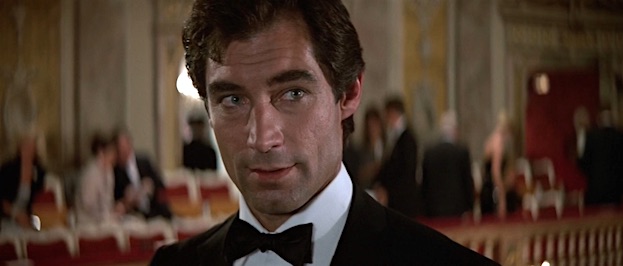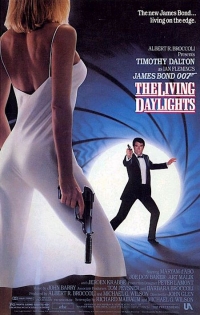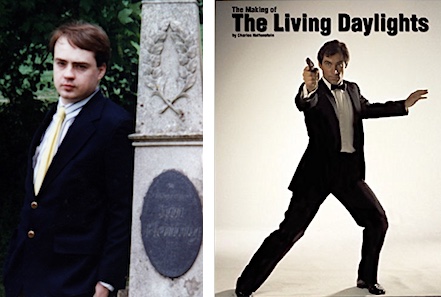“The Living Daylights was an admirable attempt to inject the series with renewed purpose and to ensure that it remained germane to moviegoers of the time.” — 007 historian Thomas A. Christie
The Digital Bits is pleased to present this retrospective commemorating the 30th anniversary of the release of The Living Daylights, the fifteenth (official) cinematic James Bond adventure and, most notably, the first to feature Timothy Dalton in the lead role and the last to feature a musical score by John Barry.
As with our previous 007 articles (see The Spy Who Loved Me, You Only Live Twice, Diamonds Are Forever, Casino Royale, For Your Eyes Only, Thunderball, GoldenEye, A View to a Kill, On Her Majesty’s Secret Service, Goldfinger, and 007… Fifty Years Strong), The Bits and History, Legacy & Showmanship continue the series with this retrospective featuring a Q&A with an esteemed group of James Bond scholars, documentarians and historians who discuss the virtues, shortcomings and legacy of The Living Daylights. [Read on here...]
The participants (in alphabetical order)…
Thomas A. Christie is the author of The James Bond Movies of the 1980s (Crescent Moon, 2013). His other books include The Spectrum of Adventure: A Brief History of Interactive Fiction on the Sinclair ZX Spectrum (Extremis, 2016), Mel Brooks: Genius and Loving It! (Crescent Moon, 2015), Ferris Bueller’s Day Off: Pocket Movie Guide (Crescent Moon, 2010), John Hughes and Eighties Cinema: Teenage Hopes and American Dreams (Crescent Moon, 2009), and The Cinema of Richard Linklater (Crescent Moon, 2008). He is a member of The Royal Society of Literature, The Society of Authors and The Federation of Writers Scotland.
John Cork is the author (with Maryam d’Abo) of Bond Girls Are Forever: The Women of James Bond (Abrams, 2003) and (with Collin Stutz) James Bond Encyclopedia (DK, 2007) and (with Bruce Scivally) James Bond: The Legacy (Abrams, 2002). He is the president of Cloverland, a multi-media production company, producing documentaries and supplemental material for movies on DVD and Blu-ray, including material for Chariots of Fire, The Hustler, and numerous James Bond and Pink Panther titles. Cork also wrote the screenplay to The Long Walk Home (1990), starring Whoopi Goldberg and Sissy Spacek. He wrote and directed the feature documentary You Belong to Me: Sex, Race and Murder on the Suwannee River for producers Jude Hagin and Hillary Saltzman (daughter of original Bond producer, Harry Saltzman). He has recently contributed articles on the literary history of James Bond for ianfleming.com and The Book Collector.
Charles Helfenstein is the author of The Making of The Living Daylights (Spies, 2012). His other book is The Making of On Her Majesty’s Secret Service (Spies, 2009).
Lee Pfeiffer is the author (with Dave Worrall) of The Essential Bond: The Authorized Guide to the World of 007 (Boxtree, 1998/Harper Collins, 1999) and (with Philip Lisa) of The Incredible World of 007: An Authorized Celebration of James Bond (Citadel, 1992). He also wrote The Films of Sean Connery (Citadel, 2001) and (with Michael Lewis) The Films of Harrison Ford (Citadel, 2002). Lee was a producer on the Goldfinger and Thunderball Special Edition LaserDisc sets and is the founder (with Dave Worrall) and Editor-in-Chief of Cinema Retro magazine, which celebrates films of the 1960s and 1970s and is “the Essential Guide to Cult and Classic Movies.”
Bruce Scivally is the author (with John Cork) of James Bond: The Legacy (Abrams, 2002). His other books include Superman on Film, Television, Radio & Broadway (McFarland, 2006), Billion Dollar Batman: A History of the Caped Crusader on Film, Radio and Television from 10¢ Comic Book to Global Icon (Henry Gray, 2011), Booze, Bullets & Broads: The Story of Matt Helm, Superspy of the Mad Men Era (Henry Gray, 2013) and Dracula FAQ: All That’s Left to Know About the Count from Transylvania (Backbeat, 2015). As well, he has written and produced numerous documentaries and featurettes that have appeared as supplemental material on LaserDisc, DVD and Blu-ray Disc, including several of the Charlie Chan, James Bond, and Pink Panther releases. He is Vice President of New Dimension Media in Chicago, Illinois.
The interviews were conducted separately and have been edited into a “roundtable” conversation format.
And now that the participants have been introduced, might I suggest preparing a martini (shaken, not stirred, of course) and cueing up the soundtrack album to The Living Daylights, and then enjoy the conversation with these James Bond authorities.

Michael Coate (The Digital Bits): In what way is The Living Daylights worthy of celebration on its 30th anniversary?
Thomas A. Christie: When The Living Daylights first appeared in 1987 it marked the 25th anniversary of the James Bond movie series, and it was to symbolize an effort by Eon Productions to highlight the series’ continued relevance to global audiences. The world was presented with a new Bond, and a new take on the character which was to set a very different tone for the years ahead. Looking back at the film thirty years later, The Living Daylights was an admirable attempt to inject the series with renewed purpose and to ensure that it remained germane to moviegoers of the time. There is a perceptible sense that the creative team was determined to update Bond for the demands of an increasingly uncertain world, taking into account political shifts as well as socio-cultural changes, and the extravagant flamboyance of the previous decade’s entries in the series suddenly felt impossibly far-removed from the comparatively stark, back-to-basics approach that was being offered to audiences of the late eighties. The movie was not only to prove very entertaining, but also laid considerable groundwork for the franchise’s subsequent evolution throughout the coming decades.
John Cork: The Living Daylights was the beginning of the modern era of Bond films. It is the movie where the filmmakers and fans began to take 007 seriously again, where the spirit of Ian Fleming again became vital to the cinematic 007. It is a film that has an excellent mix of all the ingredients that make James Bond so popular. It features a great cast and some spectacular action and effects. It is also John Barry’s last Bond score, and it is a score that I absolutely love — elegant, romantic, sexy, and filled with spy-movie vibe. The movie is pure 1980s, but in the best way.
Charles Helfenstein: There is so much to celebrate — the locations are the right blend of British and exotic, the music is classic John Barry amplified by 80s synth-pop, the story rewards you for paying attention, there are beautiful damsels in distress, there are heart-stopping jump scares, thrilling stunts, and in the center of it all is Timothy Dalton: an intense, wolf-eyed, lithe, chain-smoking, ridiculously handsome James Bond who looks like he just stepped off the page of an Ian Fleming novel. Daylights (and Dalton) swung the pendulum back to seriousness and back to Bond’s literary source. The film brought also mystery back to the series, both with a complex plot and with an actor who was not a household name.
Lee Pfeiffer: The Living Daylights is often overlooked by fans in terms of its importance in revitalizing the Bond film franchise. While Roger Moore was extremely popular and successful, even he admitted that A View to a Kill was a pretty anemic finish to his tenure as Bond. That movie had reverted to many of the overtly slapstick elements that most hardcore Bond fans abhorred. The script was uninspiring and the film underperformed compared to expectations. There was real concern that Bond’s audience was starting to become indifferent. The casting of Timothy Dalton revitalized the series when it needed it most. The Living Daylights is not a classic Bond movie. The script was written generically so it wasn’t fine-tuned for Dalton’s persona. It also has two weak villains and a plot that meanders somewhat. However, Dalton brought back a sense of seriousness to the role of Bond that was welcomed by the fans. The ads played this up with up with tag lines like “Dalton…Dangerous.” He looked like he meant business and managed to infuse the character with some Fleming-esque characteristics that had largely disappeared over the years.
Bruce Scivally: The Living Daylights is worthy of celebration if for no other reason than being the first 007 film to star Timothy Dalton, whose brooding performance was a sharp departure from the lighter touch of his predecessor, Roger Moore. With a new star, the filmmakers took a newer approach, making a James Bond film that felt tougher and more Fleming-esque; for fans of the Connery Bonds, it was like a throwback to the days of From Russia With Love, when James Bond films were humorous without trying to be over-the-top funny, as, say, Octopussy had been. A trained theatrical actor, Dalton researched the role by reading Ian Fleming’s original novels and trying to embody Fleming’s 007 as best he could. The result was a 007 film closer than ever to the Bond of the novels — a chain-smoking, hard drinking assassin on the verge of burnout who did not suffer fools gladly.
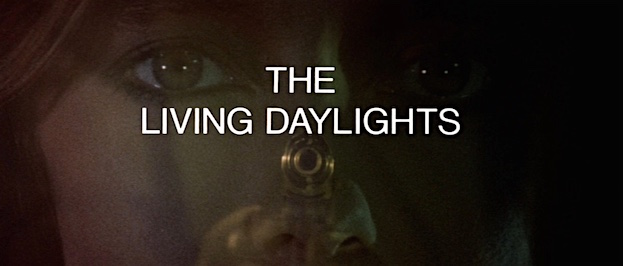
Coate: Can you describe what it was like seeing The Living Daylights for the first time?
Christie: The Living Daylights felt like a breath of fresh air after a period of stylistic uncertainty in the Bond franchise. Following the larger-than-life world domination scenarios of the late seventies Bond movies, the production team — and director John Glen, in particular — seemed determined to pull the series back towards the Cold War thriller scenarios of its glory days. With films such as For Your Eyes Only and Octopussy, there was a noticeable effort to tone down elements of the fantastic that had permeated big-budget efforts such as The Spy Who Loved Me and Moonraker, reintroducing some much-needed realism (or as close as a Bond movie ever really gets to realism) into the mix. But the late Sir Roger Moore had never seemed entirely comfortable with this attempt to return Bond to his literary roots as a battle-hardened and sometimes cynical figure who has been profoundly, and adversely, affected by his experiences in the intelligence community. Suddenly, with the arrival of Timothy Dalton, the mission to divert the course of the Bond series along a darker, slightly grittier trajectory seemed to have been kicked into top gear. Moore’s increasingly avuncular, seemingly-indestructible Bond was now gone, and in his place was a leaner, younger, more dangerous figure who reintroduced a much-needed element of unpredictability to the franchise. Everyone seemed to be upping their game, from Glen in the director’s chair to veteran screenwriters Richard Maibaum and Michael G. Wilson, and the comparison to the movie’s immediate predecessor — the lackluster, oft-maligned A View to a Kill — could not have been more striking.
Cork: One may not understand the pent-up anticipation for Daylights. A View to a Kill and Never Say Never Again had tested the resolve of many adult Bond fans. I forget the machinations, but Bruce Scivally and I went to see The Living Daylights at a press screening in Los Angeles. My initial reaction was disappointment. I wanted the film to sweep me away, deliver everything I had been missing from the later Moore films. I recalled to Bruce the old joke about the very religious but racist sexist man who has a heart attack and flat lines. He’s resuscitated by paramedics and has this shocked look on his face. His family asks what happened. “I went to heaven. I, I, I saw God, and she’s black!” I felt like him. I had gotten everything I wanted, a more serious Bond film with lots of Fleming elements, but somehow I didn’t connect to it on that first viewing. That said, I saw it probably ten times in the movie theater and listened to the score for hour after hour that summer.
Helfenstein: Daylights benefited from two publicity hooks: the debut of a new actor and the 25th anniversary of James Bond in the cinema. So there was a great deal of interest, a great deal of coverage. I remember repeatedly watching the trailer and the brief preview included in Happy Anniversary 007. The Gibraltar stunts had my jaw on the floor. My brother and I went to the first day, first showing. We loved the film but were a bit confused by the complex plot, and went back for a second showing and everything made more sense. Seeing it in the theater was a treat. It’s the film that turned me from a casual Bond fan into a super fan. That summer I also saw the film in Maine, Scotland, and Greece — it was a Daylights world tour of sorts.
Pfeiffer: I saw the film at advance critics’ screening in New York City. I was extremely happy with the end result and relieved that a more serious approach to the Bond character had been taken. The overall reaction was very positive. I think everyone realized that the series was in danger of running out of steam and becoming too predictable. Daylights put Bond back into more realistic situations that reflected the changing tastes of modern action movie audiences. It must be said, however, that the movie went against Cubby Broccoli’s philosophy of embroiling Bond in contemporary political situations. When you look at the movie today, it’s a bit cringe-inducing to realize that the Afghan “freedom fighters” who Bond sides with against the Soviets would eventually morph into the Taliban and other terrorist groups that adamantly opposed the West.
Scivally: I first saw The Living Daylights, if memory serves, at a pre-release BAFTA screening in Los Angeles. The pre-credits sequence, I felt, was adequate, but not up to the standard set by the amazing stunts in the pre-credits of The Spy Who Loved Me or Moonraker (back when stuntmen actually risked their lives to create those amazing scenes). The Bratislava sequence, I thought, had a more authentically Fleming feel than perhaps any other 007 film... and by the time the film was over, I wasn’t sure that was a good thing. Books and movies are different animals, and changes are often made to book characters to make them more palatable for a film audience. Like the Bond of the books, Dalton’s 007 is relatively humorless, and the film is, in some ways, a less entertaining Bond film because of it. While, at the time, I did appreciate that Dalton was pushing Bond in a more serious direction, with the passage of time — and repeated viewings — I see that more as a liability than a plus.
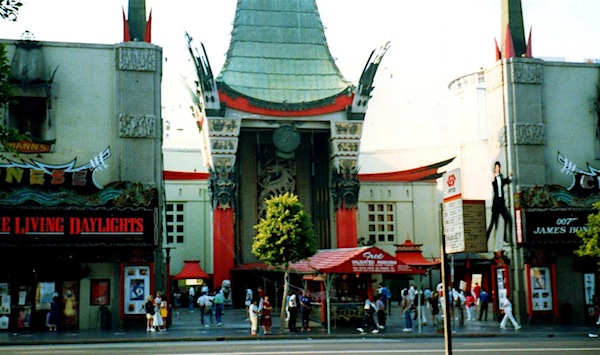
Coate: Can you compare and contrast Timothy Dalton’s inaugural performance as Agent 007 with that of the other actors who have portrayed the character?
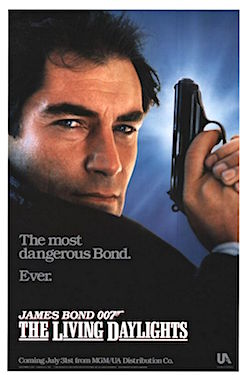 Christie: Dalton was famously an admirer of Ian Fleming’s fiction, and he is known to have studied the original Bond novels and short fiction closely when preparing to take on the part. Thus Dalton’s Bond was much more of a reluctant hero in comparison to Roger Moore’s incarnation, and there was an undeniable influence of the Fleming Bond in the way that the veteran agent was not always comfortable with carrying out his orders. Though he hits the ground running, thanks in no small part to a pre-credits sequence that hurls him straight into the thick of the action, it is interesting to see how Dalton’s take on the character quickly establishes itself as no-nonsense, slightly jaded, and considerably more contemplative than many of his predecessors. Whereas Sean Connery’s Bond appeared as more or less a fully-formed character from the earliest scenes of Dr. No, and George Lazenby faced the challenge of establishing himself as a successor while putting his own stamp on 007 in On Her Majesty’s Secret Service, Moore had a much more stately introduction to the Bond role in Live and Let Die, easing himself into the character rather more gradually. But Dalton appeared determined to waste no time in establishing his troubled, world-weary take on Bond and — though he often seemed less than comfortable with the film’s sparing moments of light-heartedness and occasional punning witticisms — he performs with great confidence and lends this brooding, discontented figure a laudable depth of character throughout.
Christie: Dalton was famously an admirer of Ian Fleming’s fiction, and he is known to have studied the original Bond novels and short fiction closely when preparing to take on the part. Thus Dalton’s Bond was much more of a reluctant hero in comparison to Roger Moore’s incarnation, and there was an undeniable influence of the Fleming Bond in the way that the veteran agent was not always comfortable with carrying out his orders. Though he hits the ground running, thanks in no small part to a pre-credits sequence that hurls him straight into the thick of the action, it is interesting to see how Dalton’s take on the character quickly establishes itself as no-nonsense, slightly jaded, and considerably more contemplative than many of his predecessors. Whereas Sean Connery’s Bond appeared as more or less a fully-formed character from the earliest scenes of Dr. No, and George Lazenby faced the challenge of establishing himself as a successor while putting his own stamp on 007 in On Her Majesty’s Secret Service, Moore had a much more stately introduction to the Bond role in Live and Let Die, easing himself into the character rather more gradually. But Dalton appeared determined to waste no time in establishing his troubled, world-weary take on Bond and — though he often seemed less than comfortable with the film’s sparing moments of light-heartedness and occasional punning witticisms — he performs with great confidence and lends this brooding, discontented figure a laudable depth of character throughout.
Cork: Dalton is a great actor. I’ve met him very briefly on a couple of occasions and he fills up the room with his charm. He was in a very tough position following Moore, who made the role his own. Like Moore, he had the same director as the previous Bond’s last film. (Guy Hamilton directed Connery in Diamonds Are Forever, then Moore’s first Bond, just as John Glen directed Moore’s last Bond film then Dalton.) I’m not sure this was the best circumstance for either actor because in both cases I think the director was quite naturally making a comparison. Also, Dalton had absolutely no prep time, no ability to rehearse and live in the part. Considering this, he gives an amazing performance. It just doesn’t quite feel like Bond to me. He laughs too easily and is too quick to play the line rather than play against the line. Connery, for example, would take an angry line and give it a very light touch. Note how Connery never breaks a sweat in the dinner with Dr. No, never talks through gritted teeth. Dalton to me runs a little too hot and cold, but rarely finds that perfectly cool center. And the thing is, meet him in person, he’s got that in spades. One of the finest scenes in any Bond film is when Dalton’s Bond goes to murder General Puskin. That’s where you can see Dalton’s amazing skill. He’s working with another actor (the brilliant John Rhys-Davies) and the tone is just perfect. There isn’t a flaw in that scene. But then Bond’s soon lumbering through the rooftop chase which was originally scripted as a comic action set-piece, and there was no way Dalton could hold that perfect tone in a script that didn’t embrace it.
Helfenstein: Dalton had the shortest preparation time of any of the Bond actors between when he was signed and when he started filming. But he was a fan of the novels and wanted to return the character to Fleming’s literary roots. Looks wise, Dalton was perfect. Rolling Stone magazine said he looked like he was genetically engineered for the role. He conveyed anger perfectly, did a great job with the love scenes and stunts, and his voice was like steel wrapped in silk. His theatrical-influenced delivery could have been toned down a bit in some scenes (“To drop a BOMB!”). Unfortunately his humor fell a bit flat, though I doubt even Roger Moore could have made a line like “Salt corrosion” uproariously hilarious. Dalton had been on Eon’s radar for a long time and his fantastic debut proved that those instincts were right.
Pfeiffer: I was always very admiring of Roger Moore’s interpretation of Bond, which was incomparable. But even he knew the producers had to bring some new energy and variations to the character. Dalton was the antithesis of Moore’s characterization of 007. He wasn’t comfortable tossing out bon mots and in some cases the insistence that he do so looked rather strained. Instead, he played the part as a deadly, sober and serious character and the result brought plenty of new energy to the franchise. Dalton reverted the character back to the earliest days of the films in which Sean Connery played the part essentially in a serious manner, with a few quips tossed out periodically. That’s the style in which George Lazenby portrayed Bond in his one and only outing as 007. Roger Moore realized he could not emulate Connery and successfully brought his own unique interpretation to the role. Since Moore was a very funny man in real life, he brought those attributes to his performances as Bond and it worked well. However, just as Moore couldn’t imitate Connery, Dalton wisely sought not to imitate Moore. He created the role anew by bringing in his own, more serious interpretation of the role.
Scivally: The great tragedy to me is that Dalton did not get a third chance to play 007. If one looks at Connery’s films, he seems a bit insecure, rushing his dialogue in Dr. No, and is getting the hang of the role with From Russia With Love, but it’s not really until Goldfinger — his third film — that he truly owns the role, bringing a swaggering confidence to every minute of his screen time. Similarly, after a couple of films where Roger Moore was rather awkwardly trying to fit his 007 into a Sean Connery mold, he was finally allowed to be more of himself with his third outing, The Spy Who Loved Me, creating a lighter Bond persona that kept the series alive into the 1980s. Especially given that the series was more or less re-booted with GoldenEye — a film that had a much larger budget than Licence to Kill, and benefited from a new director and fresh writers — it would have been interesting to see how a third Timothy Dalton film would have turned out. I like to think that under the guidance of a director like Martin Campbell, his rough edges would have been smoothed and he would have delivered one of the best Bond performances.
